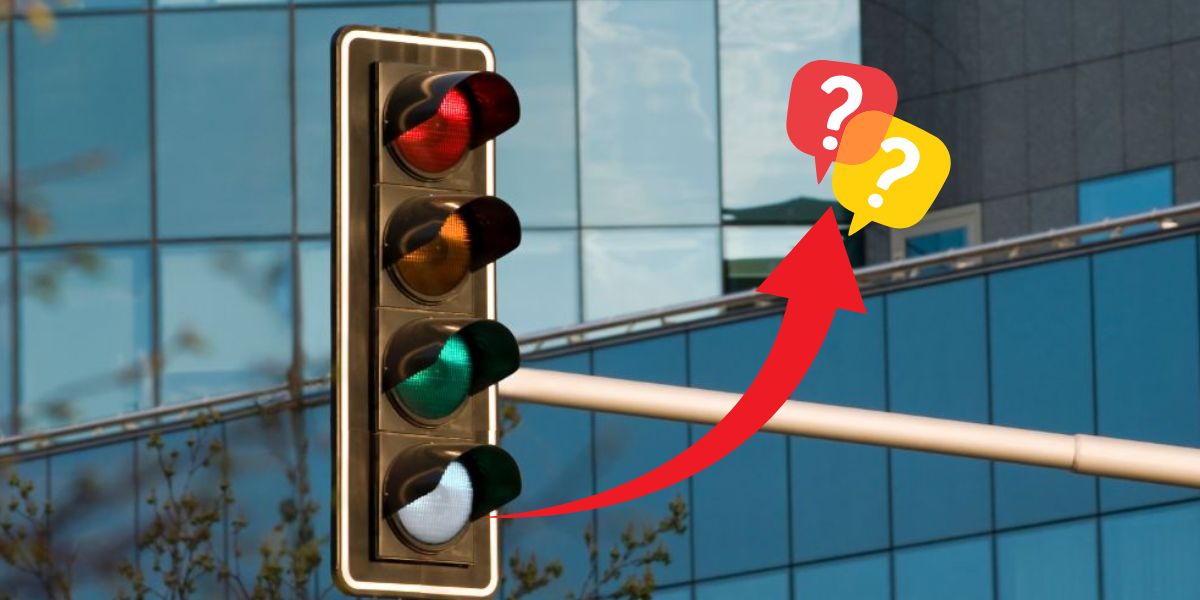Could the presence of autonomous vehicles (AVs) on the road lead to a futuristic upgrading of our traditional red, yellow, and green traffic lights?
North Carolina State University researchers suggest adding a fourth traffic signal color to improve AV vehicles’ ability to navigate junctions. The “white phase” may help with traffic control as part of the novel concept proposed.
According to experts, states that are close to ports and other business centers would be the first to implement the four-color traffic lights.
Comprehending the “white phase”
The “white phase” makes it easier to operate at junctions while signaling a change in color on the traffic light. The “white phase” will allow all AVs to interact with the traffic signal system and with each other as a large number of AVs arrive at intersections.
Common traffic lights will now have an additional white light to indicate that AVs are momentarily taking over traffic.
The “white phase” will also assist human drivers because it will eliminate the necessity for them to make their own decisions at intersections.
The only thing they will do is follow the car ahead of them. Human drivers will find it easier to navigate an intersection when they follow autonomous vehicles.
What impact will a white light have on conventional traffic lights?
People become confused because they believe that regular traffic lights will no longer operate as they once did. The operation of traffic signals will be the same as it has always been.
“Red lights will still mean stop,” says Dr. Hajbabaie, an associate professor of civil engineering at NC State and a study co-author. Go will still be indicated by green lights. Additionally, white lights will instruct drivers to merely follow the vehicle ahead of them.
Read Also: Just Banned in New York: These Vehicles Are No Longer Allowed on the Roads
The conventional red-yellow-green traffic light system will continue to regulate the situation if no AVs are approaching the traffic signals.
The “white phase’s” effects on American roadways
The goal of the “white phase” is to improve traffic flow, reduce fuel use, and enable significantly fewer intersection waits. One of the main issues on American roadways right now is traffic signal delays, which cause a lot of people to feel distressed.
Researchers discovered by employing computer simulations of these sophisticated traffic models:
- When 30% of the AVs were present, delays decreased by 70%.
- When 70% of AVs were present, traffic moved smoothly at crossings, resulting in 99% fewer delays.
- Even with a 10% AV presence, traffic delays were significantly decreased.
Without stop-and-go, less fuel is burned, which makes the “white phase” a bigger step in the direction of a better environment.
Read Also: Water Deemed Safe: Boil Advisory Lifted in 5 Massachusetts Towns
Compared to the previous versions, the 2020 model has significantly improved
Dr. Hajbabaie and his team’s most recent design uses distributed computing instead of centralized computing.
Examining the “white phase”
Although the nationwide implementation of this futuristic traffic light is not yet complete, researchers anticipate that the project will soon begin.
The first state to agree to such a proposition is North Carolina. States like Florida, Texas, and California, which have a lot of AV traffic, are thought to be the first to test the “white phase.” There will be more of these traffic lights positioned near ports and industrial zones.
These locations will provide more precise data on the “white phase’s” performance in the real world. Now that AVs are on our roads, it is essential to adapt and change traffic systems. Americans may soon notice flashing white lights at junctions.
You may view the complete study to get the entire conclusions.



